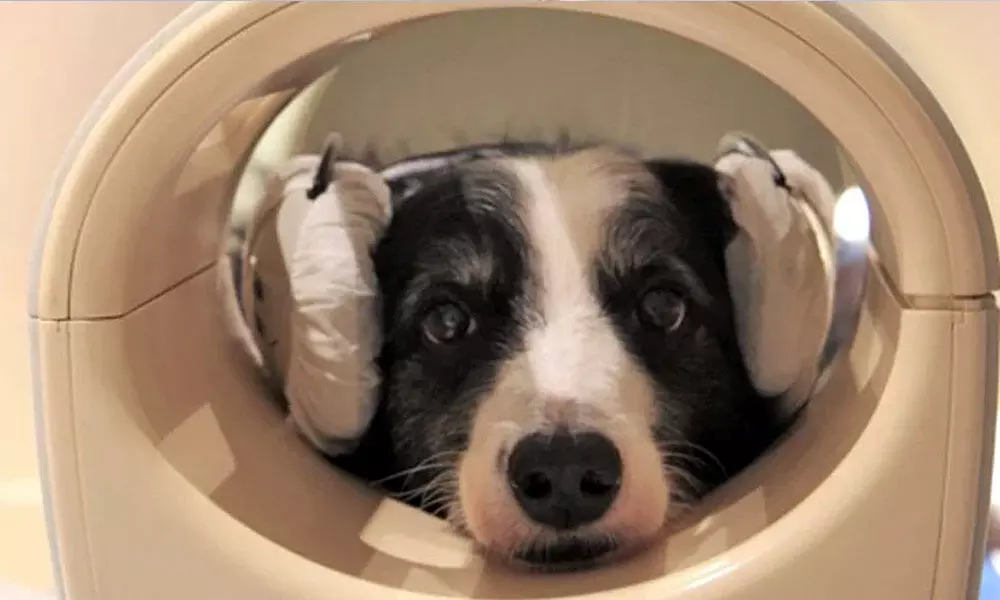Researchers Discovered Through MRI Scan That Dogs Can Distinguish Among Familiar And Foreign Human Languages

One of the dogs having a brain scan in an MRI machine. (Eniko Kubinyi)
- Analyses showed that how dogs' brains respond to new languages, the dog would have a problem with interpreting instructions from the locals.
- Each one of the dogs had only been introduced to one of the two languages, meaning they knew one and didn't know the other.
As per a new study, analyses showed that how dogs' brains respond to new languages, the dog would have a problem with interpreting instructions from the locals. Dogs' brains can discern between familiar and unfamiliar languages, according to MRI scans, making them the first and only non-human animals known to be able to do so.
Lead author Laura Cuaya, a neurobiologist at Eotvos Loránd University in Hungary, who just relocated from Mexico to Budapest with her dog Kun-kun, developed the new study, that was published online Dec. 12, 2021. According to Cuaya, they saw that Budapest residents were dog-friendly and frequently approached Kun-kun to chat to him. Kun-kun is known for paying close attention to people, so I was curious if he recognised that people in Budapest spoke a different language.
Cuaya and her colleagues taught 18 dogs, included Kun-kun, to lie still in a Mri scanner so specialists could scan their brains. The researchers presented three different recordings to the dogs while they were being inspected. The books included aSpanish reading from the popular children's book 'The Little Prince,' a Hungarian reading from the same book, and a succession of human noises that didn't sound like speech at all.
Each one of the dogs had only been introduced to one of the two languages, meaning they knew one and didn't know the other.
As per the researchers, the brain scans revealed that not only were the dogs able to discern among speech and non-speech, although they also responded differently to familiar and new languages.
The reticular formation cortex and secondary auditory cortex in dogs' brains (both located within the temporal cortex, which lies around ear level in the skull) enable dogs to process speech in two levels, termed as hierarchy processing.
Dogs may not be the only animals capable of distinguishing between human languages, according to the study.
According to Cuaya, the brain is extraordinarily good at recognising patterns, and each language has its own set of sounds and patterns that distinguishes it from the others. Many animals' brains should be able to detect these patterns with some training. Dogs, on the other hand, are exceptional in that they do not require training to discriminate between human languages.
She explained that the main auditory cortex determines whether a sound is speech or not. The secondary auditory cortex then distinguishes between a known and unknown language. Researchers discovered that older dogs had greater activity in the brain's secondary auditory cortex, implying that they were better at distinguishing between familiar and foreign languages than younger canines.
Cuaya added that perhaps as a result of the domestication process, their brains spontaneously identified the difference. While many species may be able to discern between human languages, dogs are among the few that are inclined to listen to humans.
Next Story



















